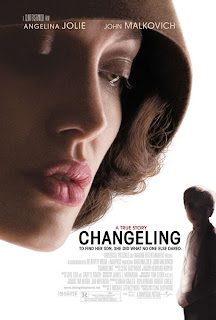
Transitions, lighting, establishing and ending shot—the city.
The establishing shot of the movie is of the Los Angeles City. Eastwood makes use of colour adding a grey tinge. There is a quarter pan shot of the City and then the camera come down to a lane, and as it comes down, Clint again plays around with the colour since the approaching vehicle suddenly starts to coloured. As this vehicle passes the camera, there is a transition and everything else gains colour.
The City is just awoken and the scene switches to the protagonist, Mrs. Collins. I like the way he introduces her. It’s an angle and we see the reflection of the protagonist sleeping and the alarm starts ringing. The frame is of the reflection from the mirror of the dressing table and the protagonist is sleeping then camera pans as the alarm clock starts to ring and she gets up. In a way Clint was playing around with the camera because the shot almost looked like the editing used a sliding technique.
Another shot, which I like is the introduction to her job. The shot begins at feet wearing roller blades which is roller blading, the camera is in front of the feet and following, until it passes someone else feet roller blading, and then the camera begins to follow those feet, the shot zooms out to reveal Mrs. Collins. This sort of technique is used quite often, where the camera tails one thing and then switches on another as it passes by and this other thing is relevant to the movie. Another place that Clint uses this is when Mrs. Collins in bought in to the Police Station in the rain from the back. The camera, follows her as she sits down to wait for Jones and it travels to Mr. ……. and we get the first peak at good cop and then he leaves and the camera is caught again by as Jones enters walks towards Mrs. Collins.
The time transitions in the movie are very smooth. To keep track of the time, Clint continuously has titles to inform the audience of the time. Clint uses other methods also. For example, the scene where Mrs. Collins informs the Police of her missing son and then it switches to the church where Guston the Pastor his give his talk and we are informed that two weeks have passes since her son went missing.
I also like when Clint has this thing for a particular scene has transition from different characters. This was done at the introduction of Guston the Pastors speech at the Church, where we saw a switch between him and the Chief of Police.
The sound of the movie also plays a big role in giving emotion to the movie. We see the use of a subtle tone which can be easily related to the mother.
Also Clint has played around with the lighting. For example when Dective Ybarra and 15 year old Stanford Clarke confesses his crime, the interrogation room becomes a hole of darkness. While showing the flashback of the murders, the use of shadows prevents it from making it graphic. Another shot is just before Gordon is hanged, when he meets Mrs. Collins. In the meeting Mrs. Collins slams Gordon against the window. The intensity of the scene was added by the lighting coming from the window.
The movie is touching, telling a tale of city that is not known and the hopes of a mother.
No comments:
Post a Comment